Bordeaux neighbourhoods: saints, churches, wine
Bonjour! Today is Bastille Day, also known as la Fête nationale française, or le 14 juillet. The French National Day is the anniversary of the Storming of the Bastille, which took place on 14 July 1789. I would like to take the opportunity to share some tips about Bordeaux, France’s sixth-largest city, which I visited (for the first, but certainly not the last, time) a couple of weeks ago. A port city on the Garonne River in southwestern France, Bordeaux is also known as Port of the Moon (Port de la Lune). It is the capital and the largest city of both the wine-growing Gironde department and the much larger Nouvelle-Aquitaine region (which also includes Limoges and La Rochelle).
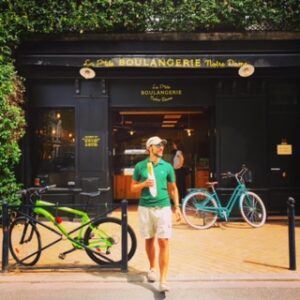
A classified ‘City of Art and History’, Bordeaux is a great destination for a city break, as there are a lot of things to do and see. In fact, the city is home to 362 ‘monuments historiques’ and has been inscribed on the UNESCO World Heritage List as ‘an outstanding urban and architectural ensemble’.
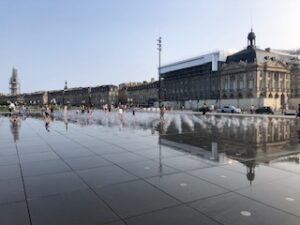
Other than drinking wine and discovering cafés, bars and restaurants, I visited a few churches, some of which date back to the Middle Ages. Interestingly, they’re usually open in the afternoons (from 2 to 6 pm). Later in the evening, they often have ticketed concerts. Many of the city’s neighbourhoods are named after these churches, and therefore bear the name of various saints. Let’s get to know them a bit better.
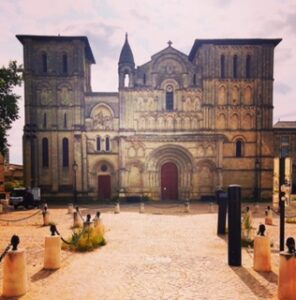
Saint André
Bordeaux’s cathedral is a great starting point for a walking tour of the city. It dates to the 11th century and has been one of the key stops for pilgrims on their way to Santiago de Compostela. In fact, together with the Basilique St Seurin and the Basilique St Michel, the Cathédrale Saint André (Saint Andrew’s Cathedral) has been designated (by UNESCO) as a Route of Santiago de Compostela. Next to the cathedral, there’s the Pey-Berland Tower. Its 50m-high freestanding belfry is crowned by a glittering gold statue of Notre Dame de l’Aquitaine.
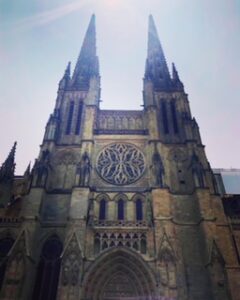
The entrance to the cathedral is on its north side. Opposite, there’s Les Mots Bleus, a café with many books to browse. Opposite the south side of the cathedral, there’s Blacklist, a renowned café with only a couple of outdoor tables – overlooking the cathedral and the Pey-Berland Tower. On the west side, there’s the City Hall (Hôtel de Ville). Not far from the latter, there’s Atelier de Faures, a restaurant where I had dinner, as well as the Musée des Beaux-Arts (Museum of Fine Arts), which I did not visit.
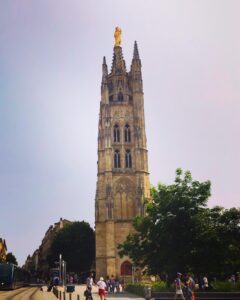
Rue des Remparts is a pedestrianised street that leads to the Porte Dijeaux, an 18th-century gate. Dunes Blanches (white dunes), a small patisserie renowned for the pastries of the same name (puffs of choux pastry filled with vanilla-dashed cream), is not far from there (on Rue de la Vieille Tour). Also worth a visit is Librairie Mollat, a famous bookstore on Rue Vital Carles.
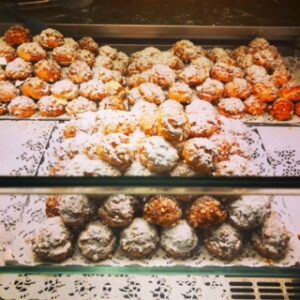
Saint Seurin
The Basilique Saint Seurin (Basilica of Saint Severinus) is only a few minutes’ walk from the Porte Dijeaux, but in the opposite direction from the patisserie or the bookstore. Named after Bordeaux’s patron saint, it dates to the 11th century and has been a key stop for pilgrims on their way to Santiago de Compostela.
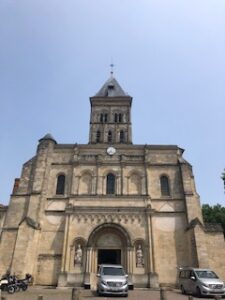
If you’re a cat lover (like me), you might want to take a small detour to Rue Jean Soula. From the Basilique Saint Seguin, take Rue Capdeville, then continue on Rue de la Croix Blanche. At 109, Rue Jean Soula, look up to see a cat peering down on you from the rooftop.
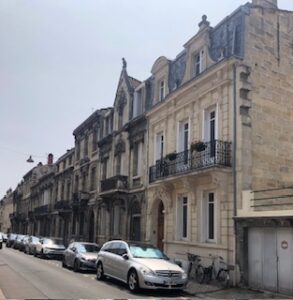
Otherwise, you can continue your walking tour towards the circular Place Tourny and from there to the semi-circular Place des Quinconces. The Monument aux Girondins, erected to honour Girondin revolutionaries, stands tall in the middle of the Place des Quinconces and can’t be missed.
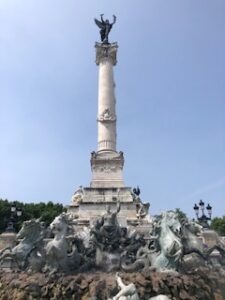
Saint Louis, Rue Notre Dame and Chartrons
Chartrons is a beautiful, tranquil neighbourhood situated north of the Monument aux Girondins. It used to be the wine merchants’ neighbourhood. I particularly enjoyed walking up and down Rue Notre Dame, dotted with many cafés and restaurants. In fact, I had breakfast at Juliena, lunch and coffee at La Pelle Café, and dessert at the Patisserie Micheline et Paulette. I also had takeaway baguettes and pastries from La P’tite Boulangerie, opposite the 19th-century Église Saint-Louis des Chartrons (Church of Saint Louis). Also worth a visit is Au Pétrin Moissagais, another famous boulangerie, a few minutes’ walk away, on Cours de la Martinique.
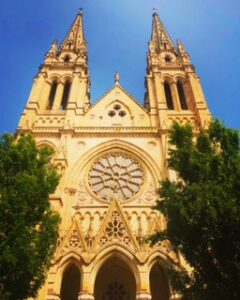
From the Musée du Vin to the Cité du Vin
Not far from there, there’s the Museum of Wine and Trade (Musée du Vin et du Négoce de Bordeaux), on Rue Borie. It is a small museum housed in a 16th-century Irish merchant’s house. The focus is on the historical and technical aspects of wine-making. The admission ticket costs 10 euros and includes wine tasting. As well as wine, we also tried the canelé, a traditional rum-flavoured cork-shaped pastry from Bordeaux.
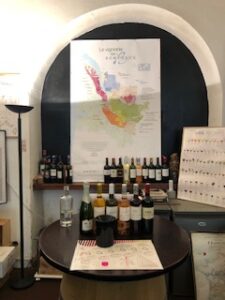
From the Musée du Vin, walk to the Cité du Vin, a 20-minute riverside walk along the Quai des Chartrons and the Quai de Bacalan.
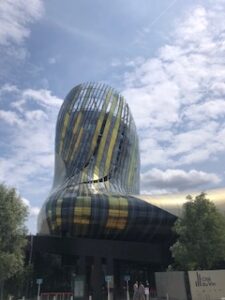
Compared to the Musée du Vin, the Cité du Vin is a much larger and more modern museum, where you can immerse yourself into the world of wine. The admission ticket costs 22 euros and includes a glass of wine at the 8th-floor bar.
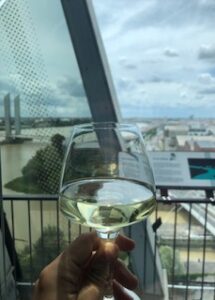
After the Cité du Vin, you can continue to Base sous-marine (you can get a discount with your Cité du Vin ticket). Previously a World War II submarine base, it is now used as an art museum and exhibit gallery. Or, you can make your way back to the Chartrons, perhaps for a light meal and/or cocktails at Symbiose (on Quai des Chartrons). Alternatively, you can take the tram or even a boat and return to the city centre.
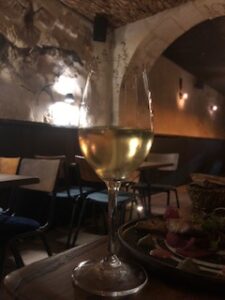
Notre Dame and the Triangle d’Or
As the name suggests, the Triangle d’Or (Golden Triangle) is a triangular-shaped district. It is framed by Cours de l’Intendance, Cours George Clemenceau and Allées De Tourny. Here you will find many chocolateries, such as the 19th-century Chocolaterie Cadiot Badie (on Allées De Tourny), where I had ice cream. Saunion is another 19th-century chocolaterie (on Cours George Clemenceau).
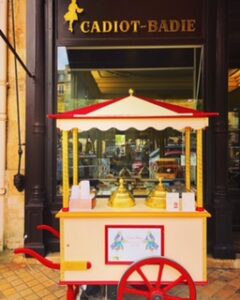
A Cantina Mare (on Rue Mably) is a Corsican restaurant specialising in fish and seafood, where I had dinner, after I had bought some cheese from the Fromagerie Beillevaire (on Rue Michel Montaigne).
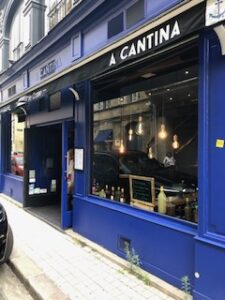
In the middle of the Triangle d’Or, there’s the circular Place des Grands Hommes, with the 18th-century Église Notre Dame du Chapelet (on the nearby Place du Chapelet).
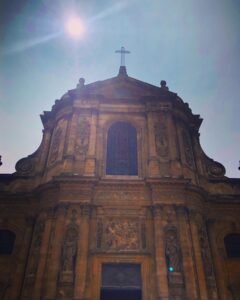
Rue Sainte Catherine
From the Église Notre Dame, walk through the Passage Sarget, then continue on Rue Guillaume Brochon until you get to Place Puy Paulin. Here you will find French House, an all-day café-bar, where I had coffee first, and cocktails a bit later. Afterwards, continue to Rue Sainte Catherine, a pedestrianised street that runs parallel to the river. It is actually Europe’s longest pedestrianised shopping strip.
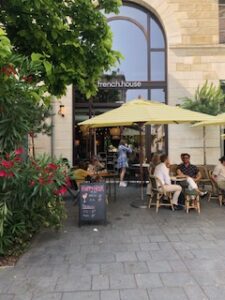
Saint Paul and Saint Eloi
Named after the Église Saint Paul (on Rue des Ayres), the neighbourhood of Saint Paul is home to some of my favourite cafés in the city. Café Piha is also on Rue des Ayres, but west of Rue Sainte Catherine (away from the river). Café Joyeux is on Rue Sainte Colombe, whereas Books & Coffee, a great place for brunch, is on Rue Saint James (east of Rue Sainte Catherine, towards the river that is).
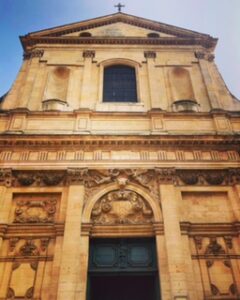
As well as the Église Saint Paul, there’s also the 13th-century Église Saint Eloi (Church of Saint Eligius), right next to the 15th-century gate and its belfry, known as Grosse Cloche (very close to Books & Coffee).
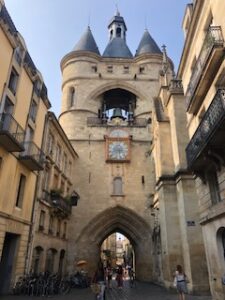
Saint Michel and Saint Croix
Saint Michel is a neighbourhood named after the 16th-century Basilique Saint Michel. As well as the Basilica of Saint Michael, there’s also the much older Église Sainte Croix, on Place Pierre Renaudel. Built between the 11th and 12th centuries, it is Bordeaux’s oldest church. Unfortunately, due to the time of my visit (morning), both were closed so I didn’t have the chance to see their interior.
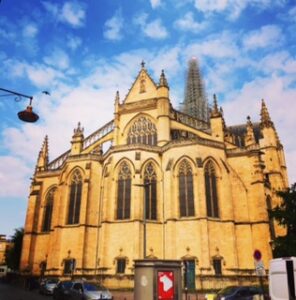
The Marché des Capucins is only a few minutes walk from the Basilique Saint Michel and is certainly worth a visit, preferably in the morning. I had oysters and wine at Chez Jean-Mi, followed by puits d’amour de la Maison Seguin. These are light pastries filled with vanilla, chocolate or lemon-flavoured cream. You can also find them in the Maison Seguin in Chartrons (on Cours Portal).
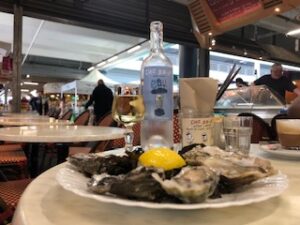
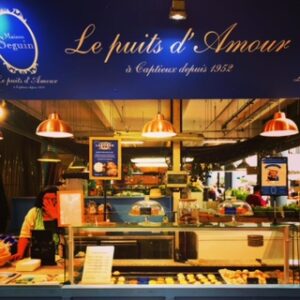
Saint Pierre
The 15th-century Église Saint Pierre (Church of Saint Peter) is halfway between the 15th-century Porte Cailhau and the Place de la Bourse, and you should visit both. In the Place de la Bourse, you will find the Miroir d’eau, one of Bordeaux’s must-see sights. It is a fountain and the world’s largest reflective pool.
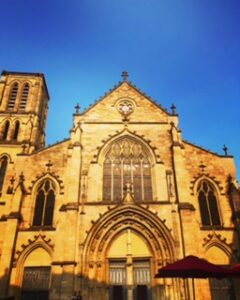
Next to the Église Saint Pierre, there’s La Maison du Glacier, where I also had ice cream. The neighbourhood of Saint Pierre is also home to many restaurants and bars. I had dinner at Le Bouchon Bordelais (on Rue Courbin), a restaurant recommended by a couple of friends who’d recently visited Bordeaux. Other restaurants recommended to me are Le Chien de Pavlov, on Rue de la Devise, and A Cantina Comptoir Corse, on Rue des Bahutiers (I did not dine there but I visited their second location on Rue Mably).
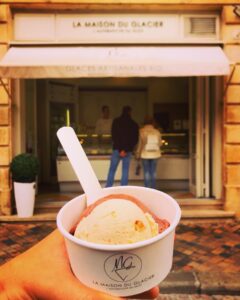
Saint Émilion
When you visit Bordeaux, it’s certainly worth venturing out of the city to visit a vineyard (or two). I went on a 4-hour tour to Saint Émilion, a small hilltop village, which -together with the surrounding vineyards- has been a UNESCO World Heritage Site (98 euros per person). Saint Émilion is about 45 minutes from Bordeaux, depending on the traffic (there is also a train that connects the two). At first, we walked around the village, then had a coffee next to the Monolithic Church of Saint Émilion. Afterwards, we visited a vineyard (a so-called chateau), where we tasted different wines, before we returned back to Bordeaux. I found this tour on Get Your Guide, but there are many more to choose from. They all start and finish in front of the Tourism Office, on Cours du 30 Juillet.
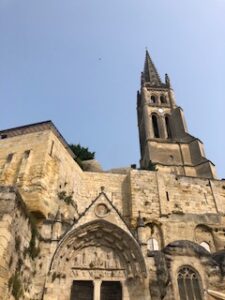
Opposite, there’s Bar à Vin, where you can try regional wines at really low prices. Be prepared to queue.
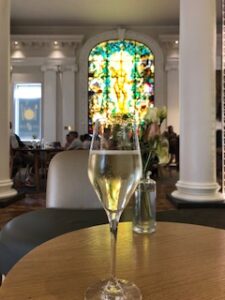
When and how long to visit Bordeaux
I visited Bordeaux earlier in the summer and I stayed there for 4 nights. In my opinion, summer is a good time to visit as the (relatively) warm weather allows for alfresco dining, which I miss in London. I also think that I would’ve had a less enjoyable break had I stayed there for less than 4 days. That said, I’m sure I would’ve enjoyed it the same had I stayed a bit longer.
How to get to Bordeaux
From Bordeaux airport, take the tram to the city centre. There are regular during the day, it takes about 40 minutes and it costs less than 2 euros.
Where to stay in Bordeaux
I stayed at La Maison Bouquiere La Cabrerie, on Rue Bouquiere, in the neighbourhood of Saint Paul. This is a beautiful 2-bedroom apartment that I found on Booking.com. The location was perfect for my break. If only I’d stayed there longer!
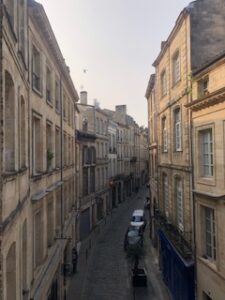
Further reading
To better prepare for my trip, I used Lonely Planet’s Pocket Bordeaux.
If you’d like to combine your visit to Bordeaux with a visit to Nantes, check out my post ‘Top 7 tips for an unforgettable weekend in Nantes‘.
Or, you can simply enjoy a musical journey to France.
Bon voyage!
Alex
(the Traveling Psychiatrist)